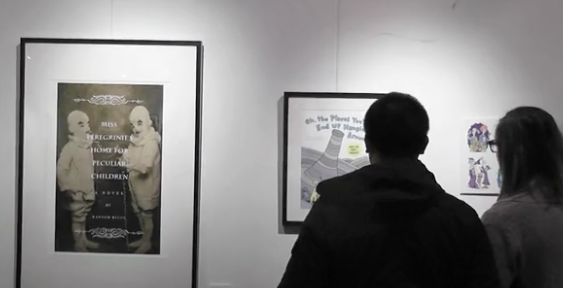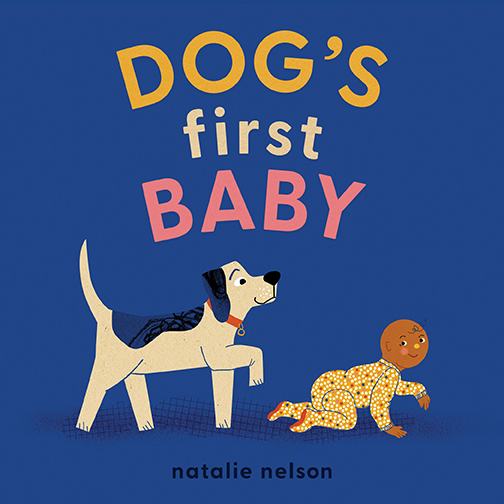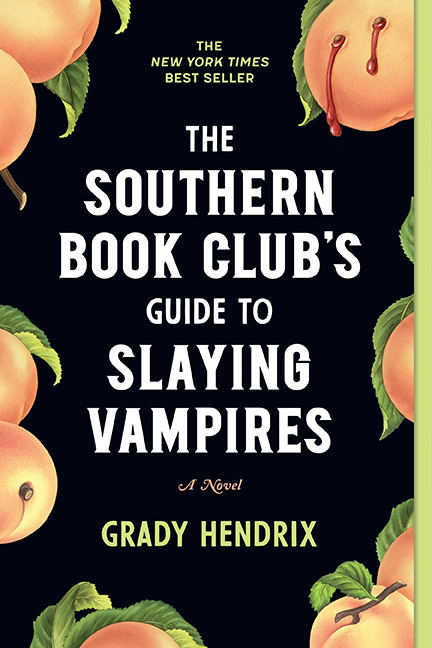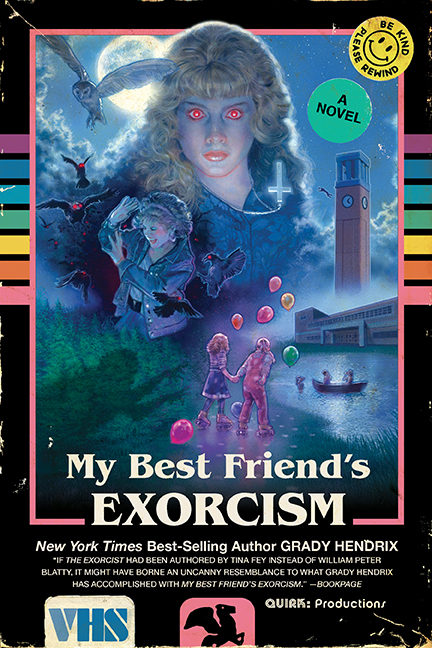Our Blog
Six Real-Life Authors Who Made Themselves Into Fictional Characters
Nicolas Cage as Charlie Kaufman in Adaptation
Note: In writing this, I realized that I appear on film with 2 of these writers, which is starting to make me wonder if I’m actually a fictional character myself. My girlfriend insists I’m real, but I’m still not entirely convinced, despite the fact that she poked me a lot and it really hurt.
It’s generally accepted that there’s a fine line between reality and fiction, but sometimes it gets particularly difficult to tell just where that line is — and these authors don’t help. We’re told not to confuse the artist and the art, that a first-person voice is not necessarily that of the author, that the views and opinions of the characters do not necessarily reflect those of the person that created the characters.
But then sometimes, the person who created the characters is a character, and then things just get all like super confusing and meta-heady-wackiness ensues and you’re not really sure where one thing starts and the other begins. And so without any further ado, I present to you 6 real-life authors who are also fictional (by their own pens, no less).

Jason Schwartzman as (fictional) Jonathan Ames
Jonathan Ames: Jonathan Ames the writer first appeared on the literary scene in 1989 in his debut novel I Pass Like Night, which recounts the narrator’s various sexual exploits in ways both shocking and hilarious. Some of these encounters are later recounted (albeit with some differences) in his debut graphic novel The Alcoholic, which explicitly features a protagonist named Jonathan A, who is also a novelist.
Later, Jonathan Ames (the writer) created a TV show called Bored To Death (based on his own short story of the same name) which focuses on the misadventures of a novelist-turned-amateur-detective named Jonathan Ames, whose debut novel is called I Pass Like Night (also you can totally see me in the Season 2 finale at the Brooklyn Comic-Con). As Ames himself has said in many interviews, “Whenever I wrote fiction, people always seemed to think that what I wrote was true, that it was entirely autobiographical. And when I would write non-fiction, they often accused me of exaggeration and fictionalization…so I decided to give it a try and thoroughly confuse my few readers.”
And I think he has succeeded at that.

Kurt Vonnegut: Much of Vonnegut’s work features, or at least alludes to, a fictional sci-fi writer named Kilgore Trout, who is generally believed to be a fictional image of Vonnegut himself. But then sometimes Vonnegut himself also ends up in his own stories — occasionally even accompanied by Kilgore Trout. He appears as a character in the novel Breakfast of Champions, observing and even interacting with several other fictional characters in the story.
But it’s Vonnegut’s final novel, TimeQuake, where things get trippy. As explained in the first chapter of the book, the original idea for the novel TimeQuake was that the universe began to momentarily shrink, but then changed its mind, forcing everyone to re-live the last 10 years (give or take) of their lives, precisely as they happened the first time. According to Vonnegut, he had some difficulty turning this into an actual interesting narrative, so the idea was scrapped, and the book that ultimately became TimeQuake was a combination of autobiographical anecdotes, and elements of what would have been his original intended story (with Vonnegut essentially telling readers what would have happened in the book he was trying to write).
However, Vonnegut still recounts the autobiographical parts of the book in terms of the timequake from the original plot — rather than simply recounting memories of the last ten years, he tells these personal stories in terms of having re-lived them on autopilot, thanks to the effects of the fictional timequake. And so, one presume that while the stories themselves are non-fictional, the timequake itself was a piece of fiction…or was it? (Image via Letters Of Note).
Posted by Thom Dunn
Five Of Our Favorite Fictional Bands
Since its inception, rock and roll has always had a unique relationship with fiction and pop culture.
From Elvis’s famed white fringe jumpsuit, aping the Captain Marvel comic book, to the great rock operas and concept albums such as The Who’s Tommy, or David Bowie’s The Rise and Fall of Ziggy Stardust and the Spider from Mars, and to the modern-day “jukebox musicals” that line the streets of Broadway and beyond, the link between rock and roll music and both literary and genre fictions are undeniable. Even heavy metal, and its various subgenres, has often been obsessed with the imagery of horror stories and fantasy.
As such, it’s only fair that fiction started taking its cues from rock and roll. Below, you’ll find some of my personal favorite fictional bands (some of whom may or may have broken their way through page/screen and found a way into our own reality).

The Archies: This one is way too many levels of meta. The Archies were a garage band formed by the cast members of the cartoon The Archie Show, which in turn was an adaptation of the long-running comic book series Archie. The songs, which featured heavily into many episodes of the cartoon series (but also the comic book, don’t forget), where actually written and performed by Ron Dante and Andy Kim, who themselves were neither cartoon nor comic book characters but rather real live flesh-and-blood human beings (weird, right?). Are you still with me? Good.
The Archies — under the guise of Archie Andrews, Reggie Mantle, and Jughead Jones — scored a number of Top 40 hits, including “Sugar, Sugar,” which was named the Billboard #1 song of the year in 1969, and still remains a popular icon of 60s bubblegum pop. How many other fictional bands can make a claim like that? Also check out this fantastic cover of “Sugar, Sugar” by Mary Lou Lord and Semisonic.
Posted by Thom Dunn
Three Amazing Do-It-Yourself Bookshelves
Actually building bookshelves for your house or apartment is a wonderfully creative, and sometimes painful, experience. You can adjust the size and design to fit your particular needs, all while discovering the upper limits of your pain tolerance every time you miss a nail.
But when you finally finish lathering on that final coat of lacquer, stand back, and admire your wonderful new home for stories, that euphoria of creation will sweep over you. That beast of a bookshelf was built by you and the sweat off your brow. It is a place for you to proudly display not only your books, but also your craftsmanship.
Note: If you experience too much euphoria after applying the lacquer, open a window.
After exploring some of the deepest recesses of DIY sites, we’ve found you three of the best build-it-yourself bookshelf instructions.
Posted by Christopher Urie
The Comic Strip Origin of Sadie Hawkins Day
Acne-ridden and braces-clad, my nerdy high school self was always the one to ask the guy to Prom. And Homecoming. And Winter Formal. But every March, my girl-asks-out-the-guy pattern was no longer perceived as odd and was adopted by every girl in school. The Sadie Hawkins Dance. The stuff of Relient K songs. And proposals on Leap Day. But this holiday — yes, holiday — is actually meant to take place in the middle of November.
Sadie Hawkins was the daughter of Hekzebiah Hawkins — one of Dogpatch’s earliest settlers in Al Capp’s comic strip Li’l Abner. (I know, I know. You all thought I was giving you an actual history lesson.) Described as the “homeliest gal in all them hills,” Sadie was still a spinster at 35 (gasp!) when her father rounded up all the unmarried men in Dogpatch, challenging them to a foot race. The men would be given a head-start before Sadie started running. Whichever man she caught would have to marry Sadie.

Though the original race took place on November 15, 1937, the spinsters of Dogpatch loved this idea so much, they banded together to make Sadie Hawkins day an annual event, celebrated every year on the Saturday following November 9.
So ladies, this November 10th go run after a guy in an empty field. Or just ask a fella to dinner.
Posted by Danielle Mohlman
Five of Our Favorite Bookshelves on Etsy
Most readers can build worlds in their minds from simply reading the words on a page. But, sometimes they are not so good a building practical things to store their volumes of words. Some readers know what a hammer is in theory and how it is used in the context of Thor, but they’ve never picked one up at the local hardware store.
What do you do if you want that homemade touch to your bookshelf, but don’t know the difference between flat and phillips head screws? You turn to Etsy.
Thankfully bookshelf creating experts can be found all over Etsy selling their wares. They range from the tiny and cute, to the massive and impractical. What makes it even better is that many of these helpful craftspeople can custom make your shelf to almost any dimension you want. Just not the 4th dimension, they haven’t figured that one out yet.
Here’s a look at some of our favorite bookshelves you can buy on Etsy right now.
Posted by Christopher Urie
DesignPhiladelphia: Photos & Video From Our Alternate Covers Gallery
Last week was a busy week for us here at the Quirk HQ.
Some of us were off in Germany at the Frankfurt Book Fair, while others were setting up shop at New York Comic Con. The rest of us were busy with a DesignPhiladelphia event, where we showcased alternate and original covers for a number of our fiction titles.
DesignPhiladelphia 2012: Quirk's Alternate Covers Gallery from Quirk Books on Vimeo.
From a pulp-horror-novel inspired Bedbugs cover to the original oil paintings for some of our mashups, we had a lot of great art hanging on the walls in DrinkPhilly's spacious Old City office. If you missed it, we've got a video and some photos for you. Have a look, and enjoy!
A huge thank you to everyone who came out, and a very special thank you to DrinkPhilly for letting us use their office. We're already looking forward to next year!
Posted by Eric Smith





